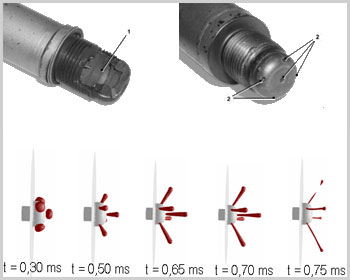godlameroso wrote: ↑04 Apr 2017, 23:46
How much lead time is there from pre chamber to main chamber full combustion? In other words is the full process comparable to standard spark ignition? Or even with the pre chamber lead time is it still faster?
Also do the majority of the species develop in the pre chamber or main chamber?
Thanks in advance.
The waiting time in the combustion preheater is the one necessary for the pre-combustion diesel spark plug (heater) together with the turbulent pressure to initiate combustion in the pre-chamber which acts as the spark of a conventional gasoline spark plug.
Admission to the pre-chamber occurs later than in the main chamber, occurs at compression time, its combustion is anticipated with the help of heaters, the pre-combustion chamber mixing assembly plus the diesel-type heater acts as a spark plug Immensely more powerful gasoline, getting making the blast more complete and focused, increasing engine life by subjecting the cylinder walls to less temperature.
In short, there is no waiting time in the pre-combustion chamber, basically everything is produced faster, the admission begins at the time of compression, not at the intake, its combustion is earlier than the main chamber assisted For the heater-spark plug, this pre-explosion is used as a substitute for the conventional spark plug. Summary, the admission is later than that of the main chamber, the combustion is anterior to that of the main chamber.
Between 97 and 95% of the explosion occurs in the main combustion chamber, between 3 and 5% occurs in the pre-combustion chamber. Generally speaking it is about creating a super-spark plug.







